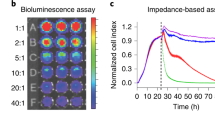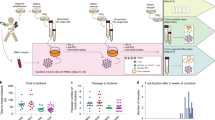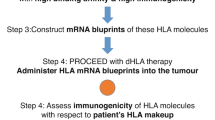Abstract
A 51Cr-release test was developed for the detection of cell-mediated cytotoxicity against transplanted solid chemically induced rat tumours, and the findings were compared with those obtained in parallel tests using a microcytotoxicity assay. It was necessary to incorporate several modifications of the original Brunner assay (Brunner et al., 1968) in order to increase the sensitivity of the test as applied to long-term tumour lines maintained as glass-adherent cultures. These included: 1. preincubation of labelled tumour cells at 37 degrees C for 3-4 h before addition of effector cells, 2. preincubation of effector cells at 37 degrees C for 12 h before addition to target cells, 3. upon admixture of target and effector cells, intimate cell contact was established by gentle centrifugation, 4. after incubation of target and effector cells at 37 degrees C, a further incubation for 1 h at 45 degrees C was included to complete the release of 51Cr from non-viable cells. Maximal cytotoxicity of tumour-bearer effector cells was detected after 12 h incubation of lymphoid and target cells at a ratio of 200:1. Spleen cells from tumour-bearing rats during the first 2 weeks of tumour growth exhibited the same pattern of reactivity in the 51Cr-release test and the microcytotoxicity assay, although significant reduction in target-cell numbers was more frequently recorded using the microcytotoxicity assay. Tumour-bearer spleen cells showed reactivity against the homologous tumour as well as against unrelated tumours. Using either assay, pre-exposure of effector cells to 3M KC1 extracts of tumour was found to inhibit their effect on tumour cells most frequently in tests in which the effector-cell donor, soluble extract and target cell were of the same tumour line.
This is a preview of subscription content, access via your institution
Access options
Subscribe to this journal
Receive 24 print issues and online access
$259.00 per year
only $10.79 per issue
Buy this article
- Purchase on Springer Link
- Instant access to full article PDF
Prices may be subject to local taxes which are calculated during checkout
Similar content being viewed by others
Rights and permissions
About this article
Cite this article
Zöller, M., Price, M. & Baldwin, R. Evaluation of 51Cr release for detecting cell-mediated cytotoxic responses to solid chemically induced rat tumours. Br J Cancer 35, 834–843 (1977). https://doi.org/10.1038/bjc.1977.126
Issue Date:
DOI: https://doi.org/10.1038/bjc.1977.126



